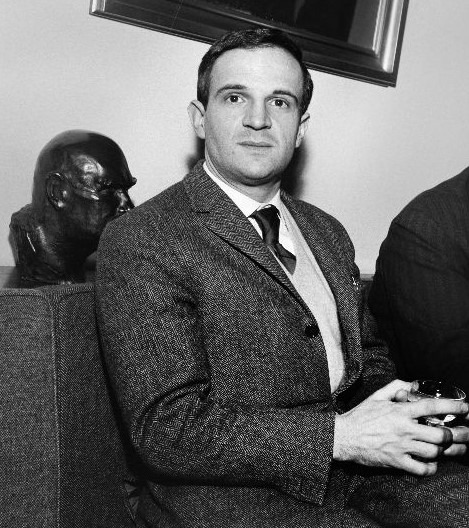Sub vs Dub: Impact of Language on Western Storytelling

When you choose between subtitles and dubbing, you're not just picking a viewing preference—you're selecting an entirely different storytelling experience. The original voice acting captures cultural nuances that even the best dubs can miss, while translated dialogue offers accessibility that purists might undervalue. This tension between authenticity and approachability shapes how Western audiences perceive foreign narratives, especially anime and international cinema. The question isn't simply which is better, but rather how each choice fundamentally transforms the story you receive.
The Cultural Divide Between Subtitles and Dubbing
Anyone who's ventured into foreign media has faced the fundamental choice: subtitles or dubbing? This decision reflects more than personal preferences—it highlights a cultural divide in how you experience foreign films and anime.
When watching subtitled content, you preserve the original language's nuances and authentic cultural context. The translation maintains artistic integrity but demands more attention to on-screen text alongside visuals. Conversely, dubbed anime and other foreign media offer accessibility, allowing you to focus entirely on visuals. However, this viewing experience often introduces Western cultural adaptations that alter the original work's spirit.
Your choice ultimately balances authenticity against convenience—subtitles honor the creator's vision while dubbing prioritizes accessibility. This divide continues to shape how Western audiences engage with international storytelling. The language choice particularly impacts how viewers experience lesser-known genres like mockumentaries and found footage films, where dialogue delivery and cultural context are essential to the intended experience.

Case Study: the Secret World of Arrietty's UK Vs US Dubs
The debate between subtitles and dubbing finds compelling illustration in Studio Ghibli's "The Secret World of Arrietty." This film presents a unique case study with two distinct English-language dubs—one for UK audiences and another for US viewers—that dramatically affect the viewing experience.
The UK dub, featuring Saoirse Ronan and Tom Holland, resonates more authentically with the British source material of "The Borrowers." Their voice acting captures Arrietty's adventurous spirit and Shō's melancholy without overdoing either.
Meanwhile, the US dub suffers from flat performances, translated dialogue that feels phoned in, and an unnecessary pop song finale. Even when the character's mouth and lips match the English dub perfectly, cultural references and emotional nuances get lost in the American version. If you're choosing between subtitles and dubs, the UK version stands alone as worthy competition to authentic Japanese viewing.
The translation challenges in Arrietty mirror how Charlie Chaplin navigated the sound revolution in cinema when transitioning from silent films to talkies while preserving his unique storytelling approach.

Authenticity Vs Accessibility in Translation
When examining the translation landscape, viewers face a fundamental trade-off between authenticity and accessibility. You're choosing between preserving the original audio track with subtitles or embracing dubbed dialogue that eliminates language barriers.
Subtitles maintain the original voice actors and emotional nuances that might get lost in translation, preserving cultural elements that enrich storytelling. The original language's cadence and tone convey meaning beyond words alone.
However, accessibility to viewers often demands compromise. Dubbed versions allow you to absorb visual details without reading text, but certain cultural references require adaptation rather than direct translation. This authenticity vs accessibility dilemma has no perfect solution - what matters is whether the translation honors the creator's intent while remaining comprehensible to new audiences. Your preference ultimately reflects which storytelling aspects you value most.
The tension between authentic language and accessibility echoes debates from the French New Wave, where directors like François Truffaut emphasized social realism through naturalistic dialogue that captured genuine cultural expression.
Economic Realities of Translation Choices
Beyond the artistic considerations of authenticity versus accessibility, market forces profoundly shape translation decisions in the entertainment industry. When you're making anime for a global audience, economic factors often dictate whether to invest in English dubs or rely solely on subtitles.
Studios save money with subtitles, but limit their potential reach to viewers comfortable reading while watching. Well-done dubs vastly expand audience reach, though they're expensive to produce. Poor acting in rushed dubs can damage perception of the original work. The anime industry increasingly views quality dubbing as an investment rather than an expense.
You'll notice streaming platforms now prioritize making content accessible to viewers through both options, recognizing that translation choices directly impact their bottom line and international market penetration.

The Evolution of Dubbing Quality in Western Anime Markets
Dramatically transforming over the past three decades, anime dubbing in Western markets has evolved from amateurish endeavors to professional productions rivaling original Japanese voice acting. You'll notice early dubs suffered from poor lip-syncing and lacked cultural context, creating a stigma that persisted for years.
As anime demand surged, studios invested more heavily in dubbing quality. The DVD inclusion of multiple language tracks revolutionized accessibility, softening the "sub vs. dub" divide. Series like Dragon Ball Z and Cowboy Bebop proved dubs could deliver exceptional performances, changing viewer perceptions.
Today's dubbing process incorporates automated dialogue recording technology and involves directors throughout production, ensuring accuracy and nuance. These improvements have expanded anime's Western appeal beyond niche audiences, making dubbed content a legitimate viewing option for mainstream consumers.
How Language Translation Affects Character Development
The technical advancements in dubbing quality create only half the equation for successful anime adaptations—the translation itself fundamentally shapes character development. When you watch a dubbed anime, you're experiencing characters through a cultural and linguistic transformation designed specifically for your understanding.
Language translation often sacrifices Japanese nuances to prioritize natural English dialogue and better lip sync. Dialogue rewriting can enhance emotional depth or alter character expression to resonate with the Western target audience. Cultural references undergo significant adaptation, sometimes changing a character's perceived personality or humor style.
Your perception of character development might vary dramatically between subtitled and dubbed versions of the same show, as each prioritizes different aspects of the original performance.
Navigating Personal Preferences in the Sub Vs Dub Debate
When faced with the contentious sub versus dub decision, viewers often find themselves traversing a complex web of personal preferences rather than pursuing an objective "best" option. Your choice ultimately hinges on what you value most in your viewing experience.
If you're seeking an authentic experience with preserved cultural nuances, subs offer direct access to the original language and performance subtleties. However, if seamless viewing without reading text is your priority, a quality dub provides greater accessibility.
Consider your language proficiency and viewing habits when deciding. Some viewers discover that high-quality dubbing can effectively capture the essence of characters, while others insist nothing matches the original vocal performances. Remember that neither option is inherently superior—your personal preference remains the most valid guide in this passionate debate.



